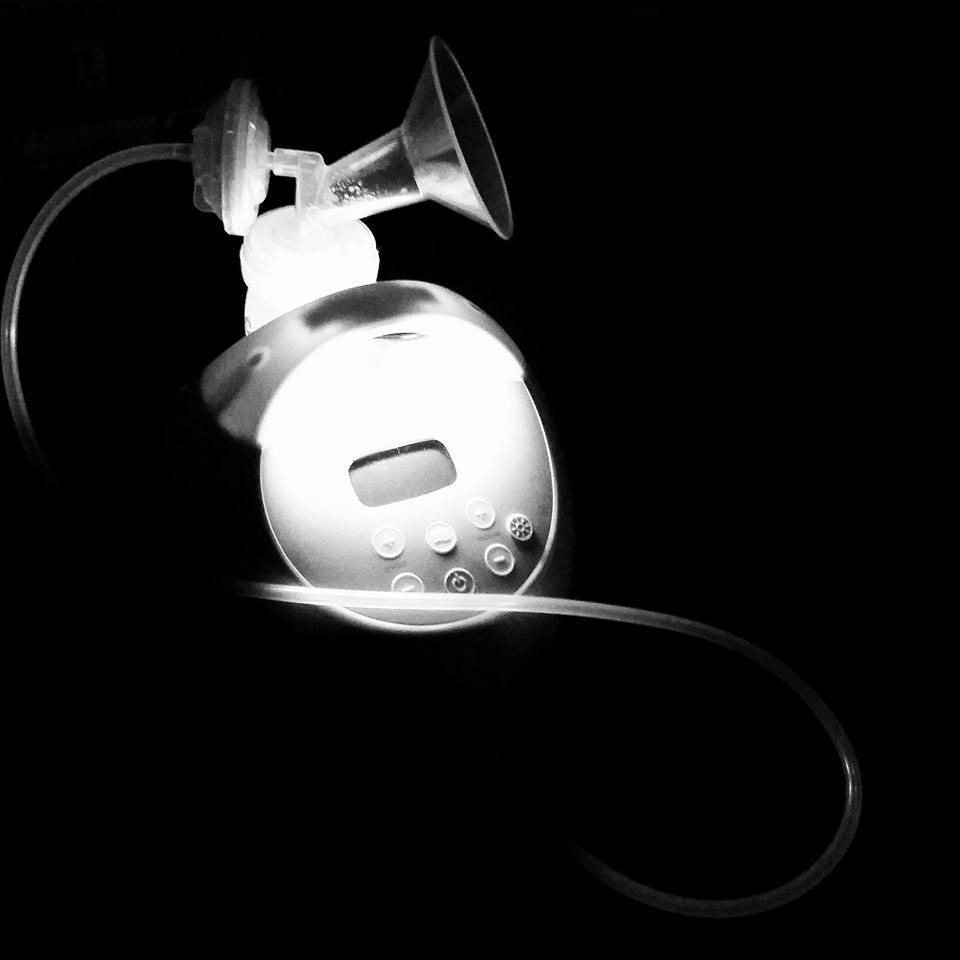“I’m going back to work soon and I don’t have a freezer stash…”
“I pump, but I only get an oz. and I see all these photos of 4+ oz. …”
“I just saw a woman saying her freezer is too full and she’s going to toss XXX oz. of milk. I want to cry, because I only have X oz. saved and I have to go back to work in 2 weeks…”
If you have ever thought any of these things, I’m here to talk you down off the ledge. You do not need 1000 oz. You don’t even need 100 oz.
I will explain why. Let’s take it step-by-step.
How much does a baby take?
In a 24 hour period, a baby takes in 24-30 oz. (This is true from 8 weeks old until roughly around 1 year, when consumption of solids is replacing human milk/breastmilk feedings)
This total breaks down to an average need of 1-1.25 oz. per hour.
A common routine for babies at daycare is to eat every 3 hours, so this would equate to a 3-3.75 oz. bottle every 3 hours, for however many stretches of 3 hours you will be apart each workday.
Calculate your daily total needed
Take however long you will be away from your baby and multiply the number of hours by 1 for your min. volume needed and by 1.25 for your max. volume needed. So, if you are away from your baby for 8 hours, then your total needed is 8-10 oz.
Or just use this convenient calculator I’ve created for you:
“But I only get .5 oz at a time when I pump”
I hear this a lot. From parents who are still on postpartum/maternity leave and breastfeeding/chestfeeding on-demand. Comparing themselves to a someone who is posting a photo of what was pumped while at work. Those are two completely different scenarios.
One is trying to pump extra in addition to feeding the baby full-time on-demand.
The other is replacing entire feedings with pumping.
Little bits add up. If you pump twice a day and get .5 oz. each time, that means you’ll have 1 extra oz. each day. And in 8 days, you’ll have 8 oz. saved. That’s 2 or more extra feedings you’ve saved up right there.
Starting to make more sense now?
Sure, there are those who have oversupply and could pump an extra 4 oz. after nursing, which is both a blessing and a curse, since they are also more likely to have to deal with clogged ducts, mastitis and other issues associated with oversupply. But again, you shouldn’t be comparing yourself to that because in most cases the body adjusts to only make what’s needed. Oversupply is not an appropriate baseline on which to judge your production. You do not need to increase milk supply to match this.
“So, how much milk do I need to save to go back to work?”
Did you calculate your needs for one workday using the calculator above? That’s what you need stashed away to go back to work. Not 100 oz. Not 1000 oz.
Why? Because you just need enough for Day 1.
When you are at work on Day 1, you are going to pump what your baby will need for Day 2.
On Day 2, you will pump what’s needed for Day 3. And so on…
It really is as simple as that. So go back to your pump, confident that the 1000 oz. stash shot you saw is an overzealous and unnecessary goal.
And if you still think that you must take supplements to increase your supply, please consider that the BEST tool you have available to you to increase supply is an empty breast. An empty breast fills faster than a full breast. It’s supply and demand. So, nursing or pumping more often is effective for most. And please read this article from Tiffany Gallagher, IBCLC: “Why you won’t hear me suggest galactogogues.”
Now that you understand why you don’t need a million ounces, you are ready to read “How to Start Building a Milk Stash” which is a practical approach to how to add pumping to save into your feeding schedule.
And if you are one of those people who is trashing their milk because their freezer is overflowing, please consider milk donation. (Contact us if you need info on how/where to donate milk. I promise you, there are plenty of little tummies out there that can make good use of it.)


 Email
Email